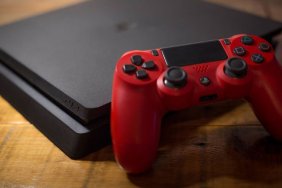Yesterday, Sony announced Project Morpheus, a virtual reality headset that will be a major part of Sony’s strategy going forward. It has respectable hardware priced perfectly for today’s gamer budget. But is it enough to deliver next-gen games in the VR space?
Now that the PS4 is diving into VR territory, its challenge shifts from being able to deliver games at 1080p 60 frames per second to having to essentially double that. In the VR space, framerate is critical in creating a pleasurable experience. Based on my experience with Oculus Rift, I’d even go as far as to say that it means the difference between motion sickness and complete euphoria.
In the case of the PS4, it isn’t just a matter of quickly adding in Project Morpheus support for games that run at 60 FPS. With current VR technology, framerate is nearly halved since two separate images need to be rendered, albeit both at half size, so you essentially end up with two 30 FPS images instead of one at 60 FPS. Therefore, the PS4 will need to run a game at around 120 FPS in order to achieve the goal of 60 FPS in virtual reality.
This fact has summoned skepticism from Oculus Rift creator John Carmack, who shared the following two tweets on Twitter:
Calibrate PS4 VR expectations: a game that ran 60 fps on PS3 could be done in VR (stereo 1080 MSAA low latency 60 fps) on PS4.
That wasn’t sniping; I think PS4 is a great platform, sufficient to drive VR. People just need to understand the demands.
That’s not to say that the PS4 is incapable of delivering a 1080p 60 FPS VR experience. What it does mean is that you should in no way expect to see a game as beautiful as inFamous: Second Son — which runs at <30 FPS — on VR anytime soon. If it were supported, the visuals would have to be downgraded substantially in order for the experience to feel right.
This isn’t Sony’s first rodeo. One of the technologies it marketed for the PS3 was 3D, a similarly hardware-taxing technology. Unfortunately, Killzone 3 and other 3D supported games lowered their resolution when 3D mode was enabled in order to maintain a sane level of frame rate. In Killzone 3‘s case it would drop from 1280×1470 to 640×716, or essentially half.
Surprisingly, the Project Morpheus is expected to support 1080p at launch (the current prototype is 1080p, anyway). It’s a magic number for creating a visually pleasing experience, but one that requires a lot of horsepower to process.
I’m very excited for Project Morpheus, and it will hopefully be the mainstream VR gaming headset of the future. However, you should set reasonable expectations. AAA games are likely to be toned down substantially to deliver a smooth experience. The real winners will be games designed and optimized specifically for the headset. These games are unlikely to deliver the graphical realism that next-gen gamers expect, but will that really matter? We’ll finally be in the promised land of VR where we belong.







